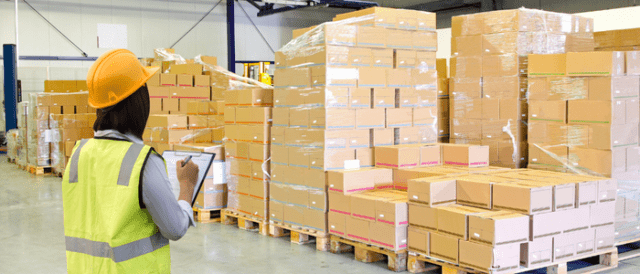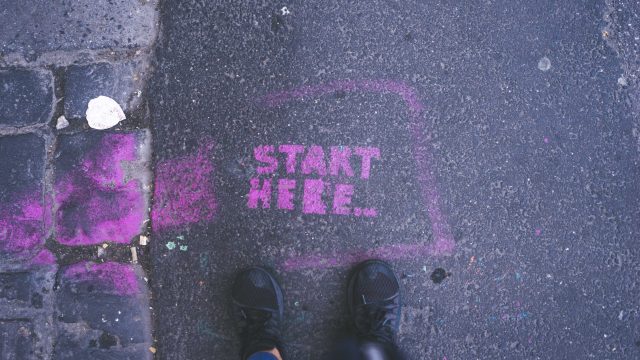Amazon is a marketplace – they don’t just sell products, they allow other people to sell products on their site too. There are a number of different methods by which people sell on Amazon – online arbitrage, private label and wholesale to name just a few. Wholesale is actually one of the more popular methods of selling on Amazon – with over a quarter of Amazon sellers selling via wholesale.

Wholesale is effectively where you’re selling other people’s products – you buy them in bulk from the manufacturer or wholesaler and you list them on Amazon. You are, in effect, the middleman. Selling wholesale on Amazon can make you a lot of money – but if you’re not careful there are traps and pitfalls you can fall into. In this article we’re going to take you through exactly how to get started selling wholesale on Amazon, why you might want to do so and some of the most common issues you might face.
What is wholesale?
Wholesale is where you buy the product from the manufacturer and sell it to the consumer. It doesn’t just apply to Amazon – for example, if you go and buy an Apple MacBook at Target, you were only able to do that because Target procured the item from Apple on a wholesale basis.
You might end up purchasing from the manufacturer directly, or you might end up purchasing from a wholesaler, who is another middleman – the manufacturer sells to the wholesaler, the wholesaler sells to the retailer (you) and the retailer sells to the customer.
Many good wholesale suppliers exist online – some are based overseas and some are based domestically. We can’t recommend any particular wholesaler but a simple Google search for “online wholesalers” will bring up a significant number of businesses that may help you source the product you’re looking for.
Why you should run an Amazon wholesale business
This may all sound great, but why should you go down the wholesale route as opposed to private label or Amazon arbitrage?
Higher profit margins: As we mentioned earlier the process of buying in bulk typically means wholesale businesses enjoy higher profit margins compared to other types of Amazon reselling business.
Steady demand for products: If you choose the right product to sell on Amazon, there’s a good chance that there will be a steady demand for it. By buying in bulk, you will be able to maintain a consistent supply of those products, where other sellers may run out.
It’s easy to scale: If you decide you want to start increasing the size of your wholesale business, this can usually be done quite easily. You can increase the quantities of the products you are buying in bulk directly with your supplier. This in itself can also help increase your profit margin, because you’ll be able to negotiate a better price for your product, by buying a bigger quantity.
You can reduce advertising and marketing costs: Wholesale businesses will often spend less on marketing and advertising because they focus on selling one type of product over a longer period of time rather than multiple products.
There are a range of wholesale suppliers: There are many different wholesale suppliers that operate in various industries, this means you not only have a wider choice of suppliers to get the best deal possible from, but you can also diversify your product offering by choosing a different supplier if necessary. This enables you to more easily adapt to changes in the market.
Why you might not want to run an Amazon wholesale business
Higher start-up costs: Starting and maintaining a wholesale business requires a significant amount of capital to upfront so that you can purchase inventory in bulk. It’s important to remember, that unless you already have a well-established product it could take longer to sell any of this inventory meaning you may not see a return on your investment immediately.
Inventory management fees: It’s important to remember that Amazon will charge you storage fees depending on the amount of inventory you have and its size. Because you’re buying in bulk, you may be liable for increased storage fees, particularly if you find that your product sells slower than you expected it to. These additional costs will affect your overall profit margin.
Risk: By purchasing a lot of stock up-front, wholesaling doesn’t allow for a lot of flexibility and if there’s any reason why you can’t sell the product, you may find yourself with a lot of capital tied up in stock that you can’t get rid of.
You can’t be as adaptive: By running an Amazon wholesale business, you’re effectively putting all your eggs in one basket. This means if there’s changes in the market, you may not be able to adapt as quickly as other smaller types of business that rely on less inventory holdings.
More research required: You will always need to do research when trying to find the right product to sell on Amazon. However, with a wholesale business model it’s even more crucial. Because so much of your capital will be tied up in inventory, it’s really important that you understand exactly what types of products you stand the best chance of selling. Failing to do this could result in considerable amounts of unsold inventory.
What are the steps for starting an Amazon wholesale business?
So, if you’ve looked at the pros and cons of starting a wholesale business on Amazon and decided this is the way forward for you, you’ll need to start your preparation. Let’s take a look at the steps you’re going to need to take.
Choose your product carefully
As we mentioned before, one of the main risks of starting your wholesale business is the amount of initial investment you’re going to need in order to buy your stock upfront. You don’t want to be left with a load of inventory that you can’t sell, so choosing the right product to sell is key.
There are several types of categories which are consistently popular for Amazon wholesalers. These include:
- Toys and Games
- Small electronics
- Phone accessories
- Jewelry
- Books
- Craft supplies
- Pet supplies
These types of categories are popular because the products are often cheap to buy in bulk and tend to be popular all year round, meaning there is less risk of being stuck with unsellable inventory.
There are a few other things on top of this that you should consider before choosing your wholesale product. Let’s take a look at these now.
Choose a profitable product
This probably seems obvious, but choosing a product which is going to be profitable is going to be your biggest challenge. You need to find a product that is not only cheap enough to buy when you find a wholesale supplier, but that you can also sell for more money on Amazon. You’ll have to do some research here and it’s not going to be a quick process, but it’s important to get it right.
Think about the size of your product
Remember, Amazon will charge you based on the size and weight of your item, so you might want to start small if this is your first time running a wholesale business. If you’re an expert, you may know enough to start wholesaling larger products, but if it’s your first time, it’s better to start small.
Choose products that are less likely to break
Just because you think you might be able to buy one hundred crystal glasses in bulk and resell them for more, doesn’t necessarily mean you should. This type of item is more likely to break in transit – meaning more cost to you as the seller. Now, if the margin is good enough, you’ll have to factor in a breakage rate and it may work out in your favor, but again, as a first time wholesaler, this is asking for trouble and you’re better off choosing something that’s not fragile.
Sell in a gated category
If you want to sell in a gated category, there are several different criteria you have to meet before you can do so. Although it takes a bit more effort to get into these restricted categories, you’ll often find that competition is lower, meaning you’ll have a better chance of selling your product. Another benefit of selling in certain categories, such as toys, is that Amazon will often ask you to provide your relationship with a wholesale supplier, which you should be able to do as an Amazon wholesaler.
See what’s popular on Amazon
Look on the Amazon “Popular”, “Movers and Shakers”, and “New Releases” categories. This will give you a good idea of what other people are selling. Look for gaps in existing product categories and see if you can find a suitable product to fill it.
Choosing your wholesale supplier
After choosing your product your next step is to find your supplier. Luckily as an Amazon wholesale seller, there’s going to be plenty of choice. There are literally thousands of businesses that deal with every type of product imaginable. So, how do you choose the right one? Here’s some of the steps you can take:
Look online: In most cases, doing a bit of online research can be a great place to start whittling down those suppliers. Simply typing “[product name] wholesaler” should give you a huge variety of suppliers you can contact. Many of these may be local suppliers in your country, which can be convenient from a shipping perspective, but might mean you don’t get the cheapest price possible.
Visit trade shows: Trade shows can be a great way to find suppliers for a range of products. Alongside more general trade shows, you can often find ones which deal with specific product types, such as toys. Visiting these shows gives you the opportunity to meet your suppliers face-to-face, allowing you to start cultivating relationships which could give you more negotiating power up front.
Sign up for trade publications: Signing up for any trade publications or newsletters can be a great way to keep up to date with what is happening in your chosen industry. Not only can you get tips on trends and sales opportunities, but you can often find information about suppliers.
Using China sourcing websites – Alibaba, DHGate, etc.: Websites like Alibaba allow you to contact manufacturers and suppliers directly and can be a great way to get products as cheaply as possible. Beware of counterfeits – these have the potential not only to get your Amazon account banned; try this often enough and you might get the pleasure of a visit from US Customs.
Once you’ve signed up to these sites, you can begin searching for the specific type of product you want to sell. Most sellers will show you pricing information and minimum ordering quantity (MOQ) for that product, which will allow you to make a more informed decision about which best fits your needs. You can then contact the supplier directly to place your order.
There are some other things you should consider when choosing your wholesale supplier:
- Don’t order branded products from China. We cannot stress this enough – branded products on Alibaba or DHGate or any other Chinese sourcing website WILL be fake. Even if the profit margin is hugely tempting – it’s not worth it.
- Always negotiate for the best price. You might be able to squeeze a few extra cents of each unit by ordering a slightly larger quantity.
- Find out any shipping costs and fees, because you’ll have to include these in your profit margins.
- Do you need to provide a business licence? Some wholesalers may require this.
How long does shipping take? You don’t want to run out of product if you get a run of orders. - Always consider your budget. Don’t overstretch yourself in the hope of getting a better deal.
Applying for relevant business licences
Depending on the location you are operating your business from, you may require additional business licences or permits. It’s a good idea to get these sorted as soon as possible because Amazon may ask to see them before approving your products. Particularly if you’re trying to sell in a gated category.
Please note: The following points in this article do not constitute legal advice or tax advice, and SourceMogul isn’t licensed to give you this advice. You are advised to contact an accountant or a lawyer if you are unsure about any legal or tax matter. The information here may vary from state to state.
Business licence: Most cities and counties require a general business licence to operate any type of business. This licence is typically issued by the local government where your business is located.
Sales tax permit (seller’s permit): If you are selling a large quantity of goods wholesale on Amazon, you may need a sales tax permit from your state’s Department of Revenue or equivalent agency. This permit allows you to collect and remit sales tax on taxable sales.
Federal Employer Identification Number (EIN): This is similar to your social security number, but is for your business rather than you personally. Your EIN is also required so you can report your business tax.
Importer/Exporter Licence (if applicable): If you are importing or exporting goods, you may need specific licences or permits from the U.S. Customs and Border Protection (CBP) or other relevant agencies. It’s a good idea to check with the relevant authorities to see if you need this.
Zoning Permits: Ensure that your business location complies with local zoning regulations. For example if you are storing a large amount of stock for your Amazon wholesale business (and you’re not using FBA) you may need zoning permits or variances if your business is not in a designated commercial area.
Choose how you manage inventory and fulfill orders
There are two main ways you will be able to fulfill your orders for your wholesale business. Fulfilled by Merchant (FBM) and Fulfilled by Amazon (FBA), let’s take a look at both of these.
Fulfilled by Merchant (FBM)
This method means you handle storage, shipping and customer service for all of your products. You get your products shipped from your wholesale supplier to your home or business address and then when a customer places an order, you dispatch it.
Providing the product you’re selling isn’t too big and bulky, this can be a great way of starting your wholesaling business. This method means you won’t get charged any fulfillment or shipping fees by Amazon, meaning you can lower your initial costs.
The downside of this method is that it can be difficult to scale and if you have a particularly busy period, you will be required to handle the fulfilment yourself which could delay your shipping times.
Fulfilled by Amazon (FBA)
With this method, you get stock sent from your wholesaler, either by you, or a third party logistics company to Amazon. Amazon then handles all of the packing, shipping and customer service for you.
This method can be great, because you don’t need to worry about handling all the time consuming activities like packing and shipping items. Instead you can spend more time merchandising and selling your products.
The downside of this method is that Amazon will charge you for the pleasure of doing it. Here’s a breakdown of the fees you might receive as an FBA seller.
Fulfilment fees: These are the fees charged by Amazon for doing all the time consuming work that you don’t want to, such as picking, packing, and shipping your products. The fee you’re charged will depend on the size and weight of the item.
Storage fees: Amazon will charge you storage fees based on the amount of space your inventory occupies in their warehouse. These fees are worked out on a monthly basis and they will often go up during peak seasons like Christmas.
Long-term storage fees: If your products have been in Amazon’s fulfilment centres for an extended period (usually over 365 days), you may incur long-term storage fees in addition to standard storage fees.
Inventory removal fees: If you need to remove your products from Amazon’s warehouses they will charge you for it. These fees vary depending on whether they need to return the products to you or dispose of them.
Returns processing fees: If a customer returns a product fulfilled by Amazon, you may be charged a returns processing fee. In some cases, Amazon may charge this to the customer, but in some cases it will fall to you to pay it.
Amazon referral fees: These are general fees that are charged by Amazon whenever you want to sell anything on their platform. They’re effectively the commission Amazon takes for introducing you to their customers.
Ongoing selling and service
So now you’ve followed all the other steps, you’ve finally got to the fun part. Selling your products. We’ve put together some hints and tips to make sure your Amazon wholesale business flourishes.
Optimize your product listings
One of the main parts of selling anything on Amazon is to make sure you’re optimizing your product listings correctly. By this we mean you need to ensure your products stand out from all the other product listings available on Amazon. This in turn will improve your conversion rate and lower your risk of having unsold wholesale products you can’t sell.
You do this by making your products easier to find, and showing customers relevant information that makes them more likely to buy your product. So how do you do this? Luckily we’ve already written a full guide for you, which tells you everything you need to know about this topic.
Keep on top of your orders
If you have decided to use an FBM model, it’s really important that you stay on top of your orders and ship them within the time frames set by Amazon. There are several implications to you business from failing to ship your orders in time:
- Higher amount of pre-fulfillment order cancellations
- Increased number of customer complaints
- More negative reviews from dissatisfied customers
All of these things can have a serious impact on your overall seller rating, which in turn will cause you to see a drop in sales. Even worse if you do continue to fail with your order fulfilment, Amazon could suspend your Sellers Account.
If you do find yourself struggling to stay on top of your orders, you should seriously consider switching over to an FBA model instead. Yes, there will be additional costs involved, but this is far better than having your account suspended and being unable to recoup the costs of your initial investment.
Manage your inventory
One of the key parts of running an Amazon wholesale business is being able to manage your inventory correctly. You need to create a careful balancing act between keeping enough stock at hand to fulfil any sudden spike in orders, whilst at the same time minimise any storage fees.
It’s really important that you closely monitor your stock levels, to avoid overstocking or even worse running out of stock. You can monitor this through your Amazon Seller Central account and check sales volumes and predicted sales from there.
You should also ensure that you keep in mind any seasonal fluctuations that may occur. For example if you sell footballs, you’re likely to see a spike during summer. You should therefore ensure there is adequate supply of your products to meet the increased demand during this period.
Deliver excellent customer service
As an Amazon wholesaler, you will find yourself in fierce competition with many other wholesale sellers. This means if you really want to stand out from the crowd, you’re going to have to deliver excellent customer service. Here’s some things you can consider doing.
- Respond promptly to questions: If people ask questions about your product, answer them as soon as you can. This will help to engage your customers and they’re more likely to purchase from you.
- Proactively contact customers: If you think there may be a problem with an order, you should reach out to your customer before they reach out to you. This will help build confidence in you as a seller and will make them less likely to cancel the order.
- Respond to reviews: It’s really good practice to respond to customer reviews, either good or bad. For negative reviews, it shows that you care about your customers and are prepared to try and resolve issues. For positive reviews, it shows that you are happy to engage with the customer, and make them more likely to shop with you again.
Get as many reviews as possible
It’s a fact that products that have reviews are more likely to sell than those that don’t. It’s therefore really important that you try and harvest as many reviews from your customers as possible.
Handling complaints well, offering excellent customer service and delivering orders promptly are just a few of the things you can be doing to build up a strong base of reviews. If you want some more hints and tips on how to do this, you can read a full article on the subject here.
Wrapping things up
Running an Amazon Wholesale business can be a rewarding experience both financially and personally. However, it takes time and effort to get right and shouldn’t be considered a quick way to make money.
There are thousands of other Amazon sellers selling wholesale that are vying for attention in this competitive space. By choosing your product carefully, finding the right supplier, optimizing your products and managing your inventory correctly, you stand the best chance of success for your wholesale Amazon business. Good luck!
FAQ’s about Amazon Wholesale
Is it easy to be an Amazon reseller?
Running any type of Amazon selling business takes a lot of time and effort to get right, is this even more true as an Amazon wholesaler? You can’t simply find a product you want to sell and just start selling it. You need to follow a series of steps (listed in this article) for it to work. Saying that, none of the steps are particularly difficult to do, providing you’re happy to take the time to do them.
Is wholesale better than online arbitrage?
Arbitrage is the practice of buying products from online retailers and selling them on Amazon. We’re not saying one is better than the other – but arbitrage is less likely to be profitable but is also much less risky, as the amounts you’re dealing with tend to be a lot smaller. Wholesale has the potential to make you a lot of money but if you get it wrong, you could stand to lose a lot too.
Is Amazon wholesale profitable?
This depends, much of your success as an Amazon wholesaler comes down to choosing cheap products, that you can then resell on Amazon for a profit. This can obviously be a time consuming process, but luckily this is where SourceMogul can help.
SourceMogul has an excellent wholesale feature which allows you to upload a CSV of all of your suppliers inventories. It then compares these against similar products already being sold on Amazon to find you products which can be sold for a profit. Not only that, it also allows you to calculate additional fees and taxes, so you are always 100% sure on how much profit you will be able to make on each product sold.
You can start a 7-day free trial for SourceMogul here.
More strategy
-

6 steps to becoming an Amazon seller. No experience needed.
Becoming a successful Amazon seller is easy - the Amazon brand and logo represents…
-

Top tips for success from a new Amazon seller
We've compiled a list of the top tips for new sellers, gathered from a…
-

How to get ungated on Amazon – your guide to Amazon restricted categories
If you’re looking to expand your online arbitrage business, you might find yourself tempted…
-

How to prepare for Amazon Q4 trading
Every year the holiday season seems to come around a little earlier. As an…




